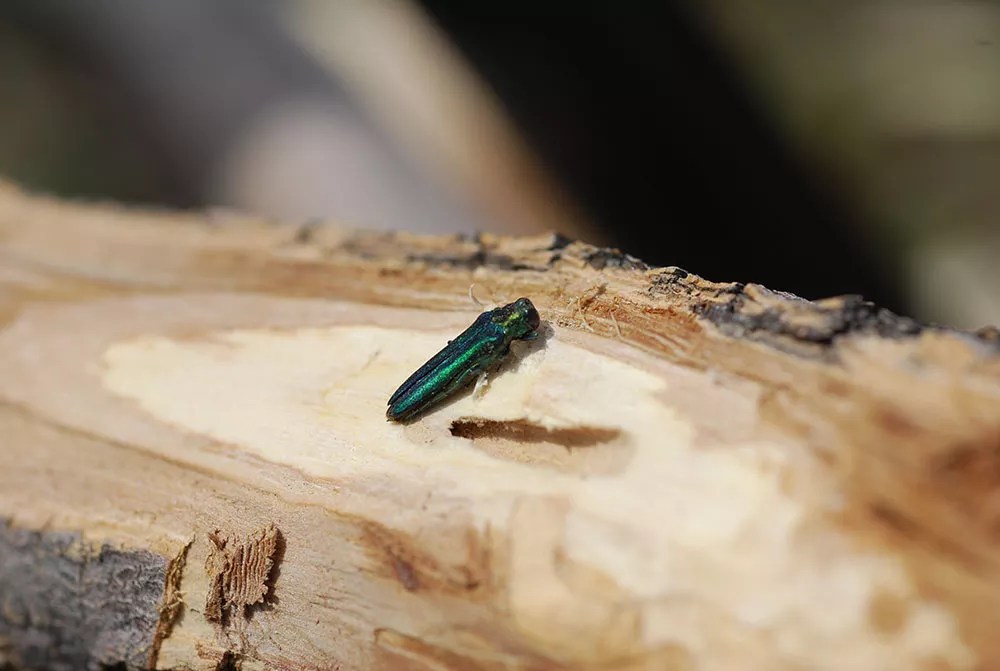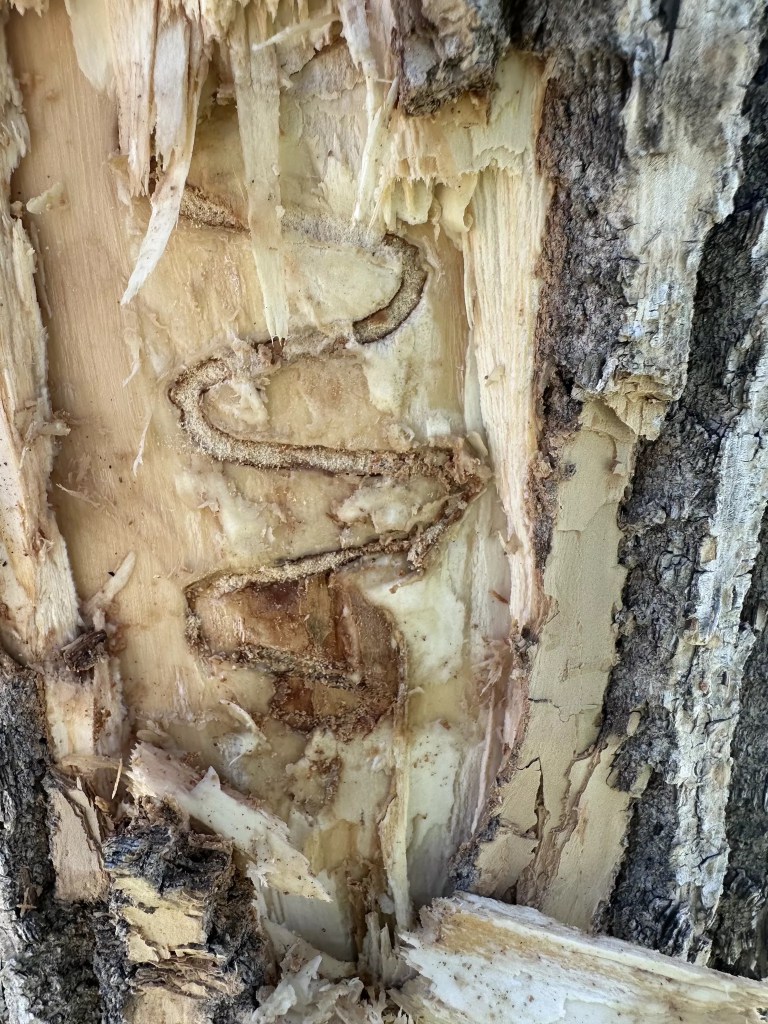
beasmartash.org

Audio By Carbonatix
The City of Denver was put on red alert in June, when the emerald ash borer was identified in the city for the first time, following more than a decade of warnings.
The emerald ash borer is an invasive species of beetle native to north-eastern Asia. It is considered the most destructive forest pest in United States history, with its larvae having killed tens of millions of ash trees by tunneling through the wood and damaging the tree’s ability to transport nutrients and water.
That is a big problem for the Mile High City. There are 1.45 million ash trees in the Denver metro area and 330,000 within city limits, accounting for around one in every six trees in Denver, according to Denver Parks & Recreation.
However, nearly four months after the insect was discovered in Denver, its presence has only been confirmed in four neighborhoods: Congress Park, Westwood, Harvey Park and Fort Logan.
This year, make your gift count –
Invest in local news that matters.
Our work is funded by readers like you who make voluntary gifts because they value our work and want to see it continue. Make a contribution today to help us reach our $50,000 goal!
“Thanks to the proactive efforts of the Office of the City Forester, including early treatment strategies and the successful Be A Smart Ash campaign, the spread has been significantly slowed,” says Stephanie Figueroa, spokesperson for Denver Parks & Recreation. “Denver is one of seven Colorado communities to confirm EAB this year, but our ‘halo effect’ has protected thousands of ash trees.”
The City Forester’s Office has been preparing for the arrival of the emerald ash borer since 2013, when the insect was first detected in Colorado. The infestation began in Boulder and has since spread to cities including Broomfield, Edgewater, Aurora, Wheat Ridge and Lakewood. Denver launched a public education campaign in 2016, urging residents to be on the lookout for the pests.
Before the emerald ash borer even arrived in the city, Denver had already replaced small ash trees on city land and established a rigorous treatment schedule for historic ash trees on city property, according to the City Forester’s Office.
In the last ten years, the city’s public education campaign also resulted in the removal of over 1,000 ash trees, the treatment of 6,000 ash trees and the planting of approximately 1,500 trees per year to help to decrease gaps caused by ash tree losses.
But the threat isn’t over.
Emerald ash borers “can be difficult to detect early, as evidence of infestation often doesn’t appear until the beetles have been feeding within the tree for two to three years,” says Luke Killoran, Denver’s City Forester. “I expect we will continue to see more losses in the coming year.”
Residents are instructed to hold off on treating their ash trees for now. Currently, most emerald ash borer larvae are in their third or fourth instar stages. The fourth instar will burrow into the sapwood for winter in the next few weeks, explains Figueroa.
Emerald Ash Borer Termination
“Because of this, it is important to note that we encourage residents with ash trees to hold off on treatments until Spring 2026,” Figueroa says. “Treatments should be applied once ash leaves are fully open, as uptake is best when trees are actively pulling water. Now, as we transition to fall and our ash trees are dropping leaves, it is not the ideal time for injections.”

Denver Parks & Recreation
Properly administered treatments are 95 percent effective at killing the pests that feed on the trees and should always be performed by a licensed tree expert, according to the City Forester’s Office.
Ash trees infested with the emerald ash borer should have D-shaped exit holes, falling bark or wavy trail lines, and attract the Northern flicker woodpecker. Residents are encouraged to spread the word to other community members and to avoid transporting firewood from ash trees.
Denver residents may be eligible to receive a free tree to help maintain the city’s tree canopy, if they have room in the public right-of-way adjacent to their property.
The city does not have an exact count of the number ash trees impacted by the insects so far, Killoran says, but his office “will continue to monitor and evaluate ash trees across the city for signs of active infestation.”